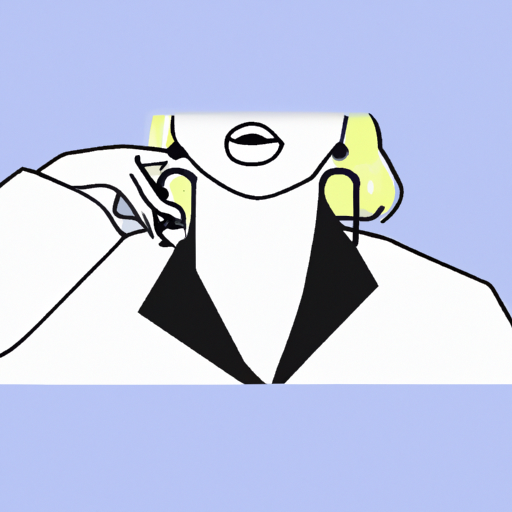-
Table of Contents
Sustainable Fashion Illustration: Ethical Design
Fashion illustration is an art form that has been around for centuries, capturing the essence of clothing and style through drawings and sketches. In recent years, there has been a growing movement towards sustainable fashion, with designers and consumers alike becoming more conscious of the environmental and social impact of the fashion industry. This article explores the concept of sustainable fashion illustration and how it can contribute to ethical design.
The Need for Sustainable Fashion
The fashion industry is one of the largest contributors to environmental pollution and waste. From the production of textiles to the disposal of clothing, every stage of the fashion lifecycle has a significant impact on the planet. According to the United Nations Environment Programme, the fashion industry is responsible for 10% of global carbon emissions and is the second-largest consumer of water worldwide.
Furthermore, the fashion industry often relies on exploitative labor practices, with many garment workers facing low wages, long hours, and unsafe working conditions. This has led to calls for greater transparency and accountability within the industry, as well as a shift towards more sustainable and ethical practices.
The Role of Fashion Illustration
Fashion illustration plays a crucial role in the design process, allowing designers to visualize their ideas and communicate them to others. Traditionally, fashion illustrations were created using pen and paper, but with advancements in technology, digital illustration has become increasingly popular.
By incorporating sustainability into fashion illustration, designers can promote ethical design practices and inspire others to make more conscious choices. Sustainable fashion illustration goes beyond just creating beautiful images; it involves considering the environmental and social impact of the design process.
Principles of Sustainable Fashion Illustration
1. Use of Sustainable Materials: Just as sustainable fashion promotes the use of eco-friendly materials, sustainable fashion illustration should also prioritize the use of sustainable art supplies. This includes using recycled or FSC-certified paper, non-toxic inks, and natural or low-impact dyes.
2. Minimal Waste: Sustainable fashion illustration should aim to minimize waste by using digital tools and techniques that allow for easy editing and experimentation. This reduces the need for physical materials and helps to conserve resources.
3. Ethical Representation: Fashion illustration has the power to shape perceptions of beauty and style. By promoting diversity and inclusivity in their illustrations, artists can challenge traditional beauty standards and promote a more inclusive and ethical fashion industry.
4. Collaboration and Transparency: Sustainable fashion illustration should encourage collaboration and transparency within the design process. This includes working with sustainable fashion brands, sharing information about the materials and processes used, and engaging with consumers to raise awareness about the environmental and social impact of fashion.
Case Studies: Sustainable Fashion Illustration in Practice
1. Megan Hess: Megan Hess is an Australian fashion illustrator known for her glamorous and whimsical illustrations. She has collaborated with sustainable fashion brands such as Stella McCartney and Osklen, using her illustrations to promote their ethical and sustainable practices.
2. Amélie Hegardt: Amélie Hegardt is a Swedish fashion illustrator who explores themes of femininity and sustainability in her work. Her illustrations often depict women in natural settings, highlighting the connection between fashion and the environment.
3. Fashion Revolution: Fashion Revolution is a global movement that aims to raise awareness about the social and environmental impact of the fashion industry. They have collaborated with fashion illustrators to create powerful images that challenge the status quo and promote a more sustainable and ethical fashion industry.
The Future of Sustainable Fashion Illustration
As the demand for sustainable fashion continues to grow, so does the need for sustainable fashion illustration. Designers and illustrators have a unique opportunity to use their skills and creativity to promote ethical design practices and inspire change.
Advancements in technology, such as virtual reality and augmented reality, also offer new possibilities for sustainable fashion illustration. These technologies can be used to create immersive and interactive experiences that educate and engage consumers about the environmental and social impact of fashion.
Conclusion
Sustainable fashion illustration is an emerging field that combines art and ethics to promote a more sustainable and ethical fashion industry. By incorporating sustainable materials, minimizing waste, promoting ethical representation, and fostering collaboration and transparency, fashion illustrators can contribute to the shift towards a more sustainable future.
Through case studies and examples, we have seen how fashion illustrators are already making a difference, collaborating with sustainable fashion brands and using their illustrations to raise awareness about the environmental and social impact of fashion.
As the fashion industry continues to evolve, sustainable fashion illustration will play an increasingly important role in shaping the future of fashion. By embracing sustainable practices and promoting ethical design, fashion illustrators can inspire change and contribute to a more sustainable and inclusive fashion industry.
